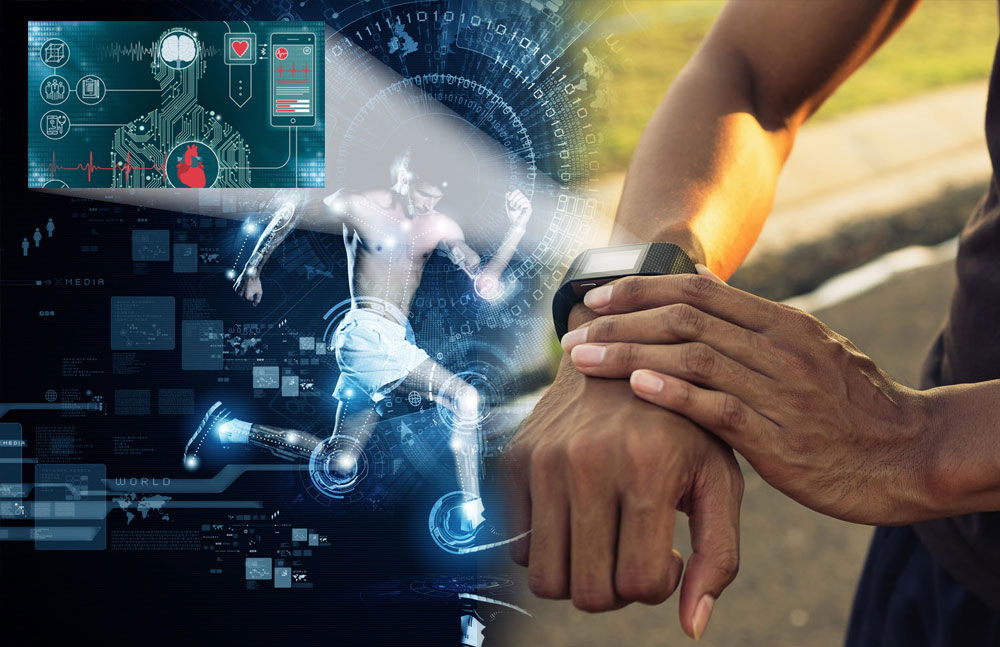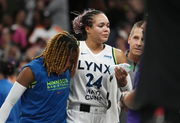

Forget ice baths and stretching—it’s 2024, folks, and the secret weapon keeping athletes healthy and injury-free isn’t a cold tub, but WEARABLE TECH! Yep, those fancy gadgets you see strapped to your favorite players are doing a lot more than counting steps. They’re predicting injuries, accelerating recoveries, and making sure athletes spend more time dominating the game and less time binge-watching Netflix from the injury bench.
Watch What’s Trending Now!
Whether it’s LeBron James perfecting his power naps with sleep trackers or Patrick Mahomes using AI-driven sensors to speed up his rehab, wearable tech is the new MVP in sports. Let’s break down how this tech is changing the game and keeping our star athletes in top shape—and you’ll see why your Fitbit suddenly feels a little…basic.
ADVERTISEMENT
Dodging Injuries Before They Happen (Because No One Wants to Be ‘That Guy’)
Athletes don’t just wake up and magically dodge injuries—there’s some serious science happening behind the scenes. Thanks to wearables, athletes are now alerted before their bodies throw in the towel. You’ve got devices like the Whoop, a wristband that’s basically your body’s personal hype man, telling athletes when to push it and when to take a breather.
Imagine you’re an NFL player pushing through a brutal season, and boom—your wearable starts flashing warnings like “Hey, you’re one squat away from a pulled hamstring.” Talk about a lifesaver!
Top Stories
Kyrie Irving Breaks Silence After Injury Return Update Emerges

Prayers Pour In For Napheesa Collier After Unfortunate Health Announcement

Is Austin Reaves Dating YouTuber SteveWillDoIt’s Ex-Girlfriend? Fact Checking Viral Claim

What Is Jake LaRavia’s Ethnicity, Nationality, and Religion? All About the NBA Star’s Background and Family Roots

Michael Jordan Could Have Repaired Scottie Pippen Relationship if He Wanted To: Former Teammate

Even in the NBA, players like LeBron are using wearables to monitor muscle strain and fatigue levels. Those devices are the unsung heroes behind those gravity-defying dunks you love. No tech? LeBron might be catching up on The Office reruns with a torn calf instead of catching alley-oops.
ADVERTISEMENT
From Crutches to Comebacks: How Wearables Make Injuries Yesterday’s News
Gone are the days when recovery was just ice packs and prayer. These days, it’s all about data-driven rehab. Take Saquon Barkley, who made an insane comeback after tearing his ACL. What helped? Not just hard work—but wearables like NeuFit’s Neubie device that tracked his every movement during rehab. NeuFit combines next-gen tech with protocols from functional neurology to help people accelerate from injuries and surgeries.
ADVERTISEMENT
The tech told his trainers when his stride was back to normal and when he could start crushing those high-speed sprints again. And guess what? Barkley likes to call it his little “Cheat Code” because it helps him “get activated”.
And here’s the kicker: wearables don’t just help get players back in the game—they make sure they come back stronger. With AI crunching the numbers, athletes are given rehab plans tailored to their unique bodies. Forget cookie-cutter workouts—this is like having a personal robot trainer on speed dial.
ADVERTISEMENT
Wearable Tech: The Sports Superhero You Didn’t Know You Needed
Look, every fan loves a good comeback story. But what if your favorite athletes didn’t need a comeback at all? Thanks to wearable tech, stars like Patrick Mahomes and Naomi Osaka are staying ahead of injuries before they even happen. Picture this: Mahomes tweaks his ankle during a game, but instead of “playing through it” (cue the horror music), his wearable instantly relays data to the coaching staff. Within minutes, they’ve adjusted his workload for the week, saving him from a potential season-ending injury.
Here’s another interesting fact. Mahomes has used the Whoop band to track his sleep since 2020 (he’s also an investor in the company). According to his trainer, Mahomes has not lost a single game when he’s woken up with a good sleep score.
Another rising tech star in 2024 is Hytro’s Blood Flow Restriction (BFR) wearables. Mo Salah, Liverpool’s football phenom, swears by these devices, which restrict blood flow to muscles to accelerate strength recovery. With BFR technology, athletes are now able to rehab faster and more effectively, reducing downtime and avoiding re-injury.
ADVERTISEMENT
Even the Catapult Vector T7, a wearable used in elite rugby and football leagues, is making waves in injury prevention. The device monitors a player’s biomechanics, tracking things like acceleration, force, and movement patterns. It’s already reduced soft tissue injuries by over 52% in athletes who consistently use it. That’s not just saving careers—it’s transforming the future of athletic training.
These wearables also pack some serious AI firepower. These devices are analyzing so much data that they can practically predict the future—okay, maybe not lottery numbers, but they can tell when athletes are most at risk and need to pump the brakes. That’s next-level game-changing. For instance, Hawk-Eye Innovations, for instance, uses motion capture technology to gather real-time data on athletes during gameplay, helping coaches make quick decisions about substitutions and rest periods to prevent exhaustion-related injuries.
With these advancements, wearables are essentially giving athletes a second set of eyes—one that’s constantly working to keep them on the field and off the injured list.
ADVERTISEMENT
The Future Is Now, and It’s on Your Wrist…So, what does all this mean for sports? Well, it’s safe to say the era of hoping for the best is over. Thanks to wearable tech, we’re seeing athletes stay healthier, recover faster, and perform better than ever. The only question is: how long until we all get one of these gadgets? Because, let’s be real—if it’s good enough for LeBron and Mahomes, it’s good enough for us mortals, right?
And hey, for those of us still feeling the aftermath of the ‘weekend warrior’ basketball game, maybe it’s time to consider these wearables for ourselves. If you’ve got better suggestions, hit me up in the comment box below!
ADVERTISEMENT
ADVERTISEMENT
ADVERTISEMENT

